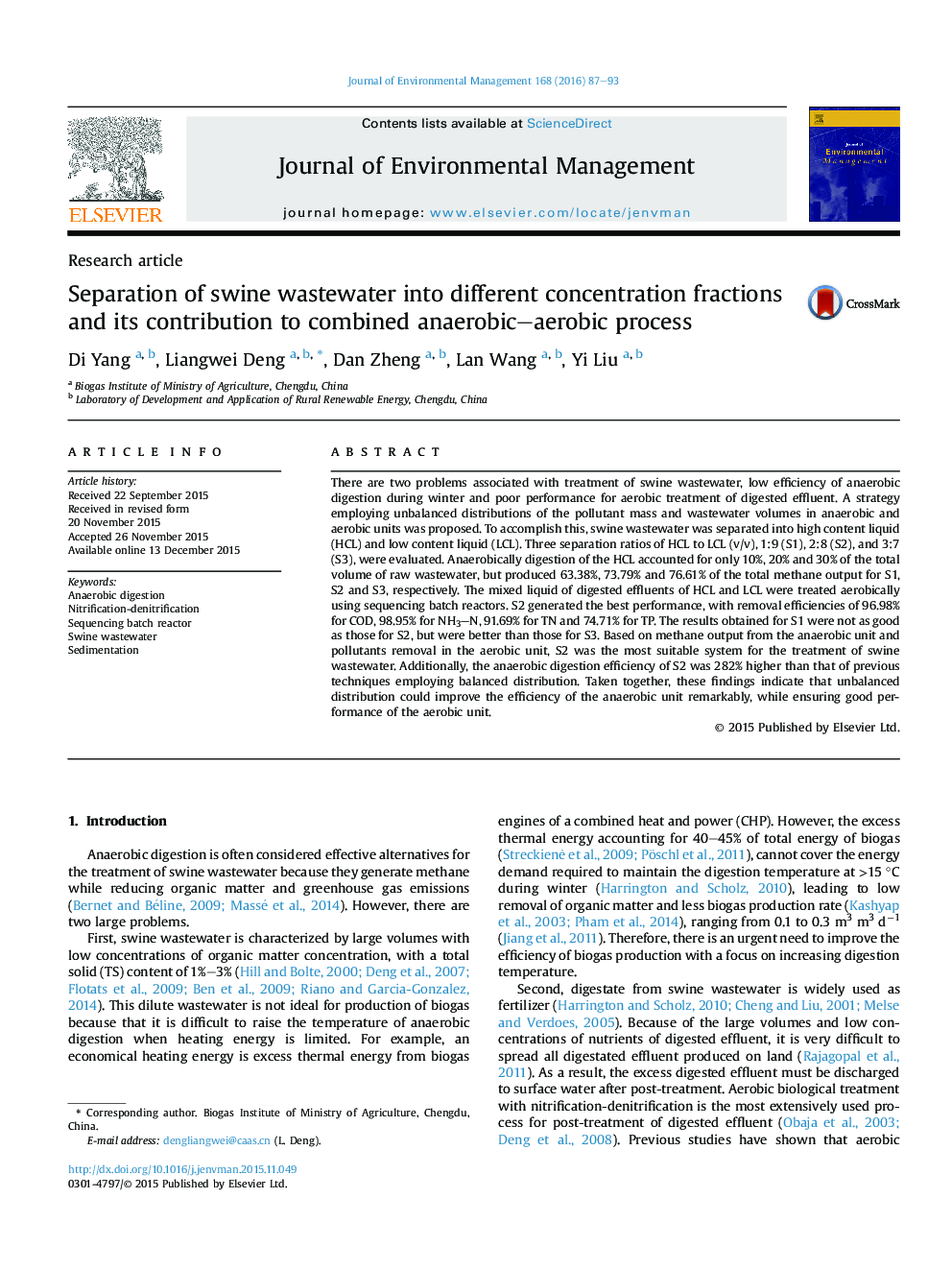| کد مقاله | کد نشریه | سال انتشار | مقاله انگلیسی | نسخه تمام متن |
|---|---|---|---|---|
| 1055547 | 1485244 | 2016 | 7 صفحه PDF | دانلود رایگان |
• Pollutant mass and wastewater volumes were distributed in different units unbalanced.
• Three distribution ratios (v/v) were evaluated.
• The efficiency of anaerobic digestion of wastewater could be increased remarkably.
• The performance for aerobic treatment of digested effluent could be improved.
There are two problems associated with treatment of swine wastewater, low efficiency of anaerobic digestion during winter and poor performance for aerobic treatment of digested effluent. A strategy employing unbalanced distributions of the pollutant mass and wastewater volumes in anaerobic and aerobic units was proposed. To accomplish this, swine wastewater was separated into high content liquid (HCL) and low content liquid (LCL). Three separation ratios of HCL to LCL (v/v), 1:9 (S1), 2:8 (S2), and 3:7 (S3), were evaluated. Anaerobically digestion of the HCL accounted for only 10%, 20% and 30% of the total volume of raw wastewater, but produced 63.38%, 73.79% and 76.61% of the total methane output for S1, S2 and S3, respectively. The mixed liquid of digested effluents of HCL and LCL were treated aerobically using sequencing batch reactors. S2 generated the best performance, with removal efficiencies of 96.98% for COD, 98.95% for NH3–N, 91.69% for TN and 74.71% for TP. The results obtained for S1 were not as good as those for S2, but were better than those for S3. Based on methane output from the anaerobic unit and pollutants removal in the aerobic unit, S2 was the most suitable system for the treatment of swine wastewater. Additionally, the anaerobic digestion efficiency of S2 was 282% higher than that of previous techniques employing balanced distribution. Taken together, these findings indicate that unbalanced distribution could improve the efficiency of the anaerobic unit remarkably, while ensuring good performance of the aerobic unit.
Figure optionsDownload as PowerPoint slide
Journal: Journal of Environmental Management - Volume 168, 1 March 2016, Pages 87–93
